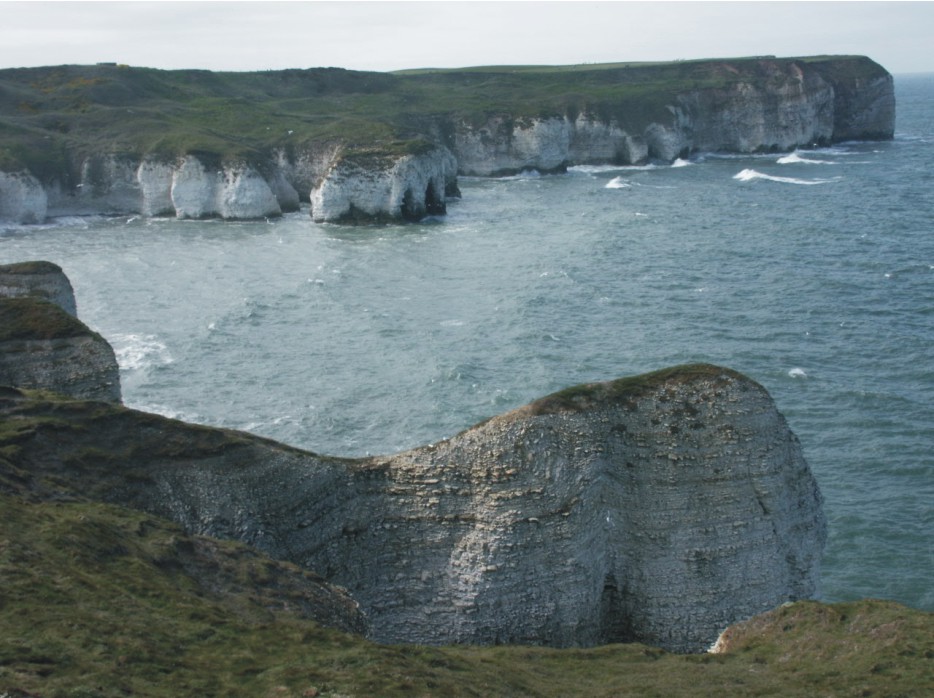Synoptic description of site:
Fully marine, moderately exposed to sheltered - open coast with Upper Cretatceous cliffs - with unique communities both intertidal and subtidal. |
Extensive description of site:
The headland at Flamborough Head comprises of Upper Cretaceous chalk cliffs. The northern side is formed of hard chalk with flints, resulting in steep vertical cliffs with mobile boulders at the base. The chalk on the south side is softer and more porous, with broad wave-cut platforms and gently sloping shores. The north face is moderately exposed to wave action, whereas the south-facing shores are sheltered. Turbidity is influenced by the soft limestone, chalk and overlying boulder clay found in North Yorkshire and Humberside. | Habitats present:
| | Mud | Sand | Rock |
| Littoral | | X | X |
| Sublittoral | | X | X |
| Seagrass beds | |
|
Description of fauna and flora:
During the summer months there is a marked difference in the water characteristics between the northern and southern North Sea, this boundary being known as the Flamborough Front. It has a strong effect on the species present and those characteristic of both northern and southern areas are both found here. Within this region of Great Britain certain species are ‘nationally rare’ or ‘scarce’ because they are north Atlantic/sub-Arctic species at the margins of their distribution in Great Britain. The cliffs are amongst the most important cliff-nesting seabird-colonies in Europe. The north-facing shore has been identified as being of international importance for its algal communities, particularly in the splash zone on the cliffs and in caves. |
Pristiness: Low |
Justification:
No industry, very small human settlements; no nearby river inputs; sewage discharges almost non-existent; tourism creates some visitor pressure: leisure boating, SCUBA diving, sustainable commercial fisheries. |
Human impact:
In general, the waters and seabed around the headland appear to be relatively clean although turbidity can be high. |
Facilities:
Access to much of Flamborough Head is limited by the steep cliffs on the north and the south-east facing shores. Laboratory facilities are found on the Hull & Scarborough Campuses. |
Available database and website:
Records of marine species belonging to all taxa are incorporated in the IECS/SCCS databases, in EXCEL on CD-ROM. Website http://hull.ac.uk |
Links:
|
Commitment and ongoing research:
IECS abd SCCS\have an agreed science plan and specifically allocated budget for biodiversity work at Flamborough Head. English Nature has statutory responsibility for monitoring NATURA 2000 habitats. |
Involvements:
|




